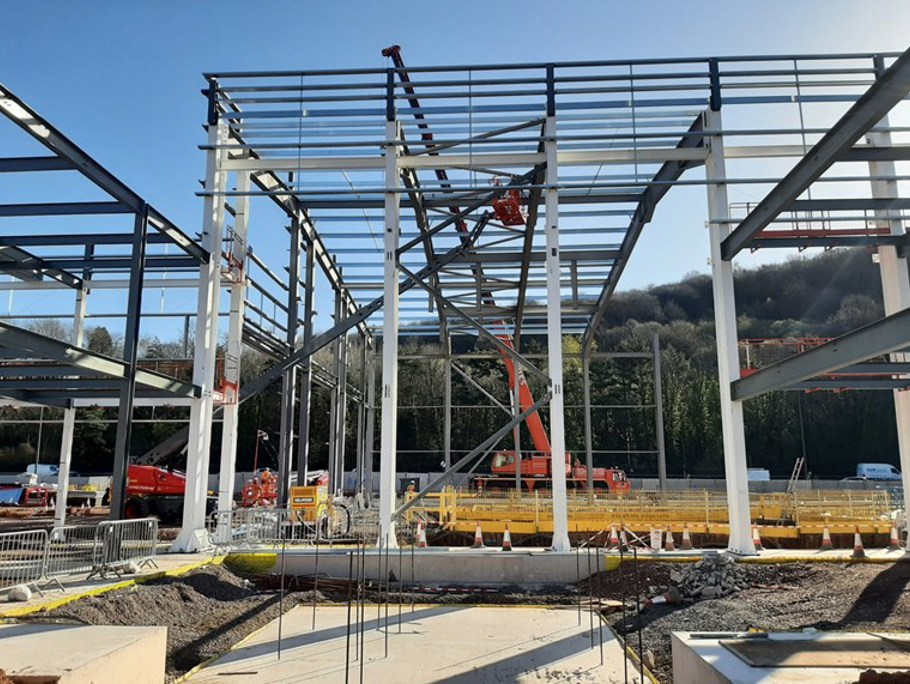Amey Consulting drew on all its strengths to design and implement the re-signalling of the Core Valley Lines (CVL) in support of the CVL renewal programme
As part of its transformation of the Wales & Borders rail network, Transport for Wales (TfW) has contracted Amey to convert the remote, ageing Core Valley Lines (CVL) into a modern, metro-style railway. Amey Infrastructure Wales (AIW) is responsible for managing the ambitious programme, while Amey Consulting is producing the designs for the extensive works required.
It is an ambitious and complex undertaking encompassing three lines, 271 signals, 34 level crossings and 55 stations. The entire network is being electrified, requiring new overhead line equipment (OLE), power supplies and communications systems to be integrated with the CVL’s dated infrastructure. A bespoke depot is under construction at Taff’s Well to house the new hybrid rolling stock and provide an operations base for TfW.
One of the client’s key requirements was to expand the timetable from two to four trains per hour, running from the heads of each of the valleys. This meant the capacity of the network had to be significantly increased. Stations are being improved, new signal sections and ‘pinch points’ such as junctions redesigned. All of this has necessitated a comprehensive resignalling of the railway.
From the start, Amey Consulting took a smart, analytical approach to the task. At bid stage, we employed our unique in-house modelling abilities to carry out a timetable modelling exercise assessing the impact of TfW’s requirements on the existing infrastructure. This enabled the signalling team to draw up outline designs for the location of equipment and present the client with viable options. As the scheme developed, timetable modelling allowed the team to assess the effect of more detailed solutions.
The new signalling system is controlled from the purpose-built Core Valley Lines Integrated Control Centre (CVLICC) at Taff’s Well, which acts as a traffic management centre for the CVL network. Workstations within the CVLICC manage the complex task of both the mainline signalling and the signalling within the depot itself. Implementing the system required complex rerouting of the existing signalling communications across the network.
The re-signalling programme has been facilitated by Amey’s multidisciplinary approach to engineering projects, collaborative ethos, and emphasis on innovation. Close working with colleagues including the track, OLE, telecoms and electrical power teams has been essential to ensure the efficient implementation of designs. Use of a design review process based on a single, overarching project information model (PIM) has helped to ensure the seamless integration of the various discipline designs for each signalling scheme.
Amey continually seeks to innovate and improve on traditional engineering approaches and design solutions, and the CVL project has provided many opportunities. For example, a known hazard of OLE schemes is that following construction, when all the infrastructure is built and equipment installed, the train drivers’ line of sight to signals can be impaired.
The OLE team addressed this by developing a unique design review process that helps to ensure sighting problems are identified and resolved at an early stage. Sight lines are drawn on OLE layouts to check that structures are not placed within drivers’ lines of sight. Any issues are logged and discussed by the team, and the model is modified as necessary.
At detailed design stage, a full 3D signal sighting check is conducted using Gioconda virtual reality software and high-definition video, providing a realistic view of the built scheme. Any obscuration is addressed and the changes are confirmed by the signal sighting chair at the interdisciplinary design check (IDC). This has reduced the need for reworking and multiple passes of designs as well as avoiding post-construction problems – all helping to save valuable time and money.
Electrical power
Meanwhile, the electrical power team worked on the renewal of the power supply to the signalling equipment. Much of the existing power supply infrastructure was in a poor state, but simply replacing principal supply points (PSPs) and distribution network operator (DNO) sources, while adding new ones to boost the power supply, would have been extremely expensive.
Again, modelling was the key – this time to analyse the signalling system’s actual power needs in order to devise a smarter approach, minimising the need for new PSPs and identifying opportunities to save costs. For example, auxiliary supply points (ASPs) are installed at strategic points to feed power back to PSPs at times of high demand, and larger cabling sizes allow for extended lengths.
Collaboration and innovation
Given the scale of the undertaking, close collaboration with third parties has been vital to success. Amey worked with TfW, Siemens Mobility, Motion, Balfour Beatty and Alun Griffiths on the delivery and incorporation of 50 new signals, over 300 axle counter sections and 98 signalling location cases.
The collaborative relationship with the rolling stock provider helped to meet a key Welsh Government objective – access for all. Trackside beacons at stations work with the onboard train systems to ensure the right doors open at the right places, allowing everyone to safely board and depart from trains. The beacons system is also being employed in a new application on the CVL project, beacons are being located around Permanently Earthed Sections (PES another innovation being introduced on the project to reduce costs of electrifying the railway by removing the need to undertake expensive bridge reconstructions to accommodate OLE equipment) to control the train pantograph automatically.
Looking forward our focus moves to the second phase of the project where we tackle the remaining transformation works which includes our new line of sight signalling system that gets introduced on the Cardiff Bay Line.
